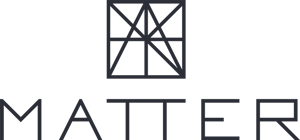
Frequently asked questions
For non-dilutive funding for traumatic brain injury assessment. Can't find your answers here?
Ask our
Paratus team.
This is a non-dilutive funding opportunity for developing digital tools for pre-hospital traumatic brain injury (TBI) assessment, managed through MATTER’s Paratus Digital Health Hub in association with Center for the Biomedical Advanced Research and Development Authority (BARDA). More info on the challenge page: https://matter.health/challenges/paratus-digital-health-accelerator-non-dilutive-funding-traumatic-brain-injury/
To develop rapid, easy-to-use digital triage tools that determine if a patient has a TBI requiring escalation of care. The solution should be usable in mass casualty or disaster scenarios like nuclear blast events.
Two stages are available:
-
Software prototype stage: $500K-$1M, up to 12 months
-
Early clinical stage: up to $2M, 12-24 months completion
Commercial, academic and nonprofit entities. Academic and nonprofit organizations must partner with commercial entities and demonstrate access to required intellectual property.
The solutions should:
-
Be rapid, easy-to-use and an almost purely digital triage tool (with some exceptions for small, handheld devices)
-
Work on widely available devices (smartphones preferred)
-
Ideally require no or minimal prior training for any user, nor internet connection or auxiliary components
-
Apply to any casualty with potential additional injuries
Ideally the data should be captured by one or more smartphone sensors, with the ability for:
-
Imaging capability, e.g. for pupil assessment
-
Accelerometry/gyroscopes, e.g. for assessment of gait, steadiness, muscle tone
-
Audio recording, e.g. for speech analysis
Note: Optional wearables (example: EEG bands) considered but not preferred
Good Samaritan bystanders, first responders and/or emergency department staff in mass casualty scenarios.
The primary focus is on mass casualty/disaster scenarios requiring rapid TBI assessment, such as bomb events or blast situations with multiple head injuries or nuclear detonation scenarios with potentially thousands of victims. Solutions should consider the following:
-
Anticipation of ambient conditions such as noisy and chaotic areas of delivery, rapidly changing illumination / light conditions
-
Red/yellow/green triage system for evacuation and treatment prioritization
-
Next step triage centers may be field hospitals and not conventional hospitals
Unlike clinical concussion diagnostics, this focuses on:
-
Determination of severity of TBI, if TBI is present
-
Rapid mass casualty triage; individual diagnosis not required
-
Good Samaritan bystander use vs. trained clinician operation
-
Pre-applications due: January 15, 2026
-
Invitations sent by: February 2, 2026
-
Full proposals due: February 27, 2026
-
Contract negotiation: early summer 2026
Two-stage process:
-
Stage 1: Open solicitation with abstract/solution fit (due by January 15)
-
Stage 2: Detailed project proposal for down-selected applicants
-
Clear triage use case alignment
-
Path to scaling and/or ubiquity for EMS workers
-
Commercial viability in civilian settings
-
Sensitivity and specificity targets (80%/60% minimum suggested)
-
Preliminary data
-
Awardees are expected to engage the FDA through the Q-submission pathway during their project if they are not already engaged in this process
-
False negative risk minimization critical
-
Focus on commercialization potential, not research-only solutions
-
Office hours sessions for individualized conversations
-
BARDA technical team consultations for specific questions
-
Information sessions with BARDA clinical experts
-
Attend office hours (Fridays through January 15)
-
Review solicitation documents on MATTER website
-
Contact MATTER at paratus@matter.health for specific questions
-
Clear demonstration of technology readiness for emergency use
-
Strong clinical relationships and study design expertise
-
An ability to articulate the commercial viability of the solution beyond this use case
No FAQs found
Try adjusting your search terms or clear the search
